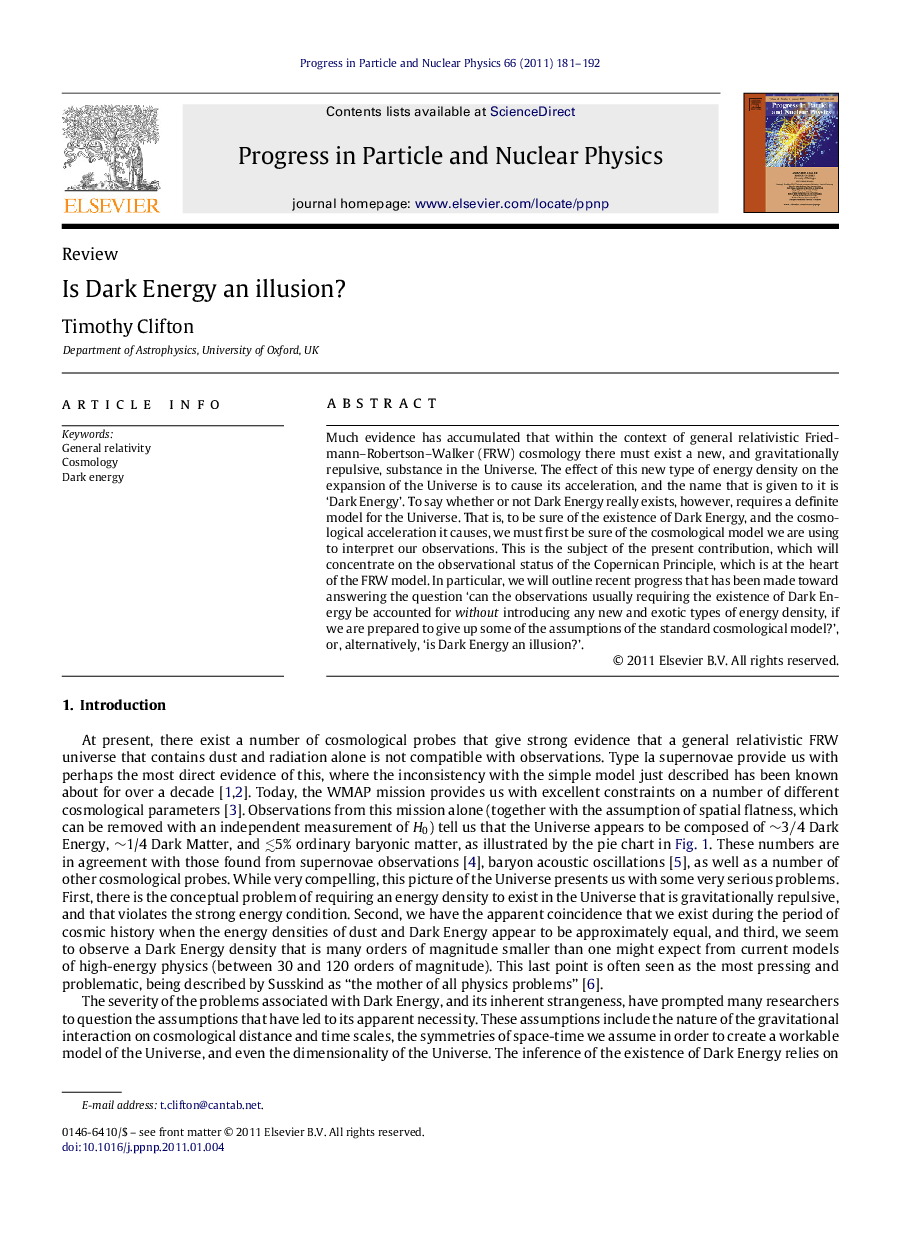| کد مقاله | کد نشریه | سال انتشار | مقاله انگلیسی | نسخه تمام متن |
|---|---|---|---|---|
| 1854498 | 1035840 | 2011 | 12 صفحه PDF | دانلود رایگان |

Much evidence has accumulated that within the context of general relativistic Friedmann–Robertson–Walker (FRW) cosmology there must exist a new, and gravitationally repulsive, substance in the Universe. The effect of this new type of energy density on the expansion of the Universe is to cause its acceleration, and the name that is given to it is ‘Dark Energy’. To say whether or not Dark Energy really exists, however, requires a definite model for the Universe. That is, to be sure of the existence of Dark Energy, and the cosmological acceleration it causes, we must first be sure of the cosmological model we are using to interpret our observations. This is the subject of the present contribution, which will concentrate on the observational status of the Copernican Principle, which is at the heart of the FRW model. In particular, we will outline recent progress that has been made toward answering the question ‘can the observations usually requiring the existence of Dark Energy be accounted for without introducing any new and exotic types of energy density, if we are prepared to give up some of the assumptions of the standard cosmological model?’, or, alternatively, ‘is Dark Energy an illusion?’.
Journal: Progress in Particle and Nuclear Physics - Volume 66, Issue 2, April 2011, Pages 181–192